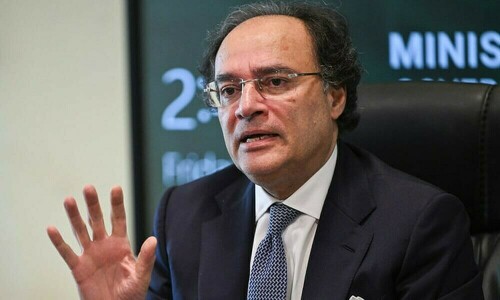Pakistan Seeks Expansion of Currency Swap Line with China
Pakistan has formally requested China to increase its existing currency swap arrangement by 10 billion yuan ($1.4 billion), according to Finance Minister Muhammad Aurangzeb. He also indicated that the nation intends to introduce a Panda bond before the close of the year.
Aurangzeb mentioned in an interview during the International Monetary Fund and World Bank Group spring meetings in Washington that Pakistan already possesses a 30 billion yuan swap line.
“From our viewpoint, increasing the line to 40 billion renminbi would be beneficial… we have submitted that request,” Aurangzeb stated.
The People’s Bank of China has been actively encouraging currency swap agreements with various emerging economies, including Argentina and Sri Lanka.
Pakistan has also achieved advancement in the issuance of its inaugural panda bond, which represents debt issued in China’s domestic bond market and denominated in yuan. Discussions with the leaders of the Asian Infrastructure Investment Bank (AIIB) and Asian Development Bank (ADB), the institutions slated to offer credit enhancements for the issuance, have been encouraging, he noted.
Economic Reforms and Global Support
“We aim to broaden our lending sources and have made notable headway in this area. We anticipate conducting an initial issuance during this calendar year,” he added.
Aurangzeb anticipates that the IMF executive board will approve the Staff Level Agreement on its new $1.3 billion arrangement under a climate resilience loan program, along with the initial review of the current $7 billion bailout program, in early May.
Approval from the IMF board would release $1 billion under the program, which Pakistan secured in 2024 and has been instrumental in stabilizing the nation’s economy.
When questioned about the potential economic repercussions stemming from tensions with a neighboring country following a recent incident, Aurangzeb acknowledged that such events are “not going to be helpful.”
Economic Outlook
Aurangzeb projects economic growth of around 3% for the current fiscal year, ending in June 2025, and expects growth in the 4-5% range the following year, aiming to reach 6% thereafter.



Comments (0)
No comments yet. Be the first to comment!
Leave a Comment